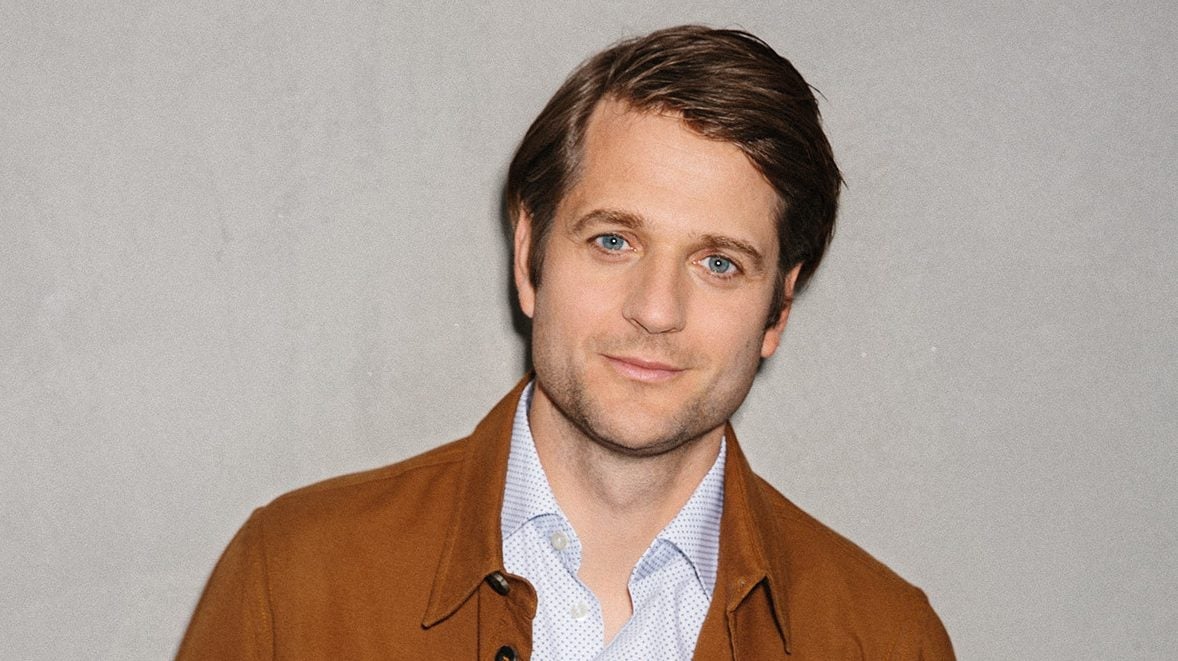Klarna’s path to Europe’s most valuable startup began with utter defeat
It’s another sunny, pandemic-stricken day at home, which means another day of online shopping from the sofa until a vaccine is coursing through our veins. But those Dr. Martens Chelsea boots cost £150 ($206) and you’ve only got 50 quid. What to do?


It’s another sunny, pandemic-stricken day at home, which means another day of online shopping from the sofa until a vaccine is coursing through our veins. But those Dr. Martens Chelsea boots cost £150 ($206) and you’ve only got 50 quid. What to do?
For some people, a “buy now pay later” (BNPL) lender like Klarna is the answer: You can get your Docs now and pay for them over time. But as Gen Z-focused BNPL companies take aim at the credit card industry, there are reasons to be skeptical about whether the burgeoning trend is healthy for consumers and merchants.
What is Klarna?
Today, Klarna is Europe’s most valuable startup. But when it launched in Stockholm 16 years ago, the company had a difficult time finding backers. In a pitch competition similar to the show Shark Tank, with an audience of luminaries including the king of Sweden, H&M’s chairman, and other prominent business leaders, Klarna came in last.
This month, however, the company’s valuation reached $31 billion, tripling in less than six months after Klarna raised $1 billion in its latest funding round.
Klarna is a bank, fully licensed in its native Sweden, but it’s also a tech company, with an app and a staff of more than 1,000 software engineers. It’s best-known as a pioneer in the growing field of firms that let customers purchase an item and pay it off over time in installments—usually four—often without any interest or fees.
BNPL services typically bill themselves as an alternative to credit cards. They work in different ways, but Klarna makes the bulk of its money by charging a processing fee to the retailers that accept it, not by charging shoppers. Though it does also collect fees or interest on late payments, depending on which service the customer is using.
In recent years the company and its ilk have seen their popularity grow—a trend the pandemic supercharged as it sent more shoppers online. In 2020, Klarna reported a 46% jump (pdf) in the total value of transactions it processed.
Consumers like BNPL options because they get more financial flexibility without having to pay for it. Avoiding credit card interest and being able to make purchases they couldn’t otherwise squeeze into their budgets were the top two reasons shoppers gave for using BNPL in a survey that CB Insights, a technology research firm, included in a report on the industry (pdf).
Retailers are happy to accept BNPL because it can help increase the number of shoppers making purchases, lead to shoppers spending more, and attract new customers, especially young ones. On an earnings call last November, sneaker retailer Foot Locker said that since enabling Klarna on all its North American sites, the service had become one of the top three payment methods customers chose, with more than 2,000 transactions every day. Macy’s said in February that two-thirds of the customers using Klarna to make purchases were entirely new for the retailer, and most were under age 40. (BNPL appears particularly popular for fashion and beauty products.)
But BNPL options have also raised concerns they make it too easy for shoppers to buy things they can’t afford, and missed payments can still ding a customer’s credit. While companies like Klarna try to upend the credit-card industry, they’re doing so under increased scrutiny from regulators.
And it’s not always clear whether BNPL is a great deal for all merchants. As fintech consultant Jason Mikula pointed out during a Clubhouse discussion with Quartz, smaller retailers may not have the resources to figure out whether the charges they pay to these lenders, which can be around 7%, are worth it. It can require some savvy and analytics to divine whether a sale is truly attributable to a pay-later option.
90 million: Klarna’s total active customers
250,000: Retailers Klarna works with
$53 billion: Total value of transactions Klarna processed in 2020 (pdf)
$1 trillion: Total value of transactions BNPL services are expected to process by 2025 (pdf)
42%: Share of Americans who have used a BNPL service, according to one survey
4x: Estimated increase of BNPL purchase volume in the UK in 2020
Origin story

Klarna’s co-founders attended the Stockholm School of Economics, where they started the company before graduating. CEO Sebastian Siemiatkowski (pictured) is the only one of the three still with the firm in an executive role. Here are some details on Klarna’s founding trio:
😃 Sebastian Siemiatkowski
- Swedish national and son of Polish immigrants
- Elle called him “a Disney version of a tech entrepreneur prince”
- Read Richard Branson’s business books at age 12
- Worked the broiler at a Burger King
😃 Niklas Adalberth
- Flipped burgers with Siemiatkowski at Burger King
- Left Klarna as deputy CEO in 2015
- Helped start the Norrsken Foundation, which encourages social entrepreneurship
- Quoted: “I do not want to die with a bag of money in my account and I do not want my children to grow up with a bag of money in their account.”
😃 Victor Jacobsson
- These days he’s an advisor and private investor
- Left Klarna in 2012 as CFO
- Was a deputy platoon commander in the Swedish Armed Forces, per LinkedIn
A brief history of credit
BNPL is a 21st century version of a very old idea. Here’s a look back at some highlights in the history of credit.
18th century BCE: By the time Babylonian king Hammurabi issued his series of written laws, lending goods or money at interest was established practice. His code laid out regulations on topics such as maximum interest rates—33% on loans of grain, and 20% on loans of silver—and debt relief.
1st century BCE: Roman law permitted loaning money at interest (pdf), or usura, but prohibited compound interest, usurae usararum. The English term “usury” derived from these and originally meant charging any amount of interest, though today it refers to charging excessive interest.
Middle Ages: Even when it was allowed, lending for profit was generally viewed as predatory. In Europe, religious doctrines eventually forbid it. The Catholic church, for example, banned Christians from loaning to other Christians at interest and in 1179 enacted a proposal threatening excommunication of those who did.
16th century: By this time, global trade and exploration had created a growing need for capital and credit. In 1545, England’s Henry VIII fixed a national interest rate of up to 10%.
18th century: Consumer culture began to emerge and modern banks with it. In colonial America, where hard currency was often scarce, credit was vital to the growth of the young economy.
19th century: Mass production was creating new consumer products, but they could be expensive to buy in cash. It became common to purchase farm equipment, sewing machines, furniture, and pianos in installments, helping to spread the idea of credit financing for everyday goods.
20th century: During the Great Depression, layaway programs let shoppers pay for products over time. Companies had also begun to issue credit cards that let customers buy goods at their outlets. In 1950, Diner’s Club introduced the first card for shoppers to make purchases at a variety of businesses.
21st century: The boom in e-commerce spawns new buy-now-pay-later options for online shoppers.
How does Klarna make money?
Klarna makes the bulk of its money by charging a processing fee to the retailers that accept it, not by charging shoppers. The company’s net operating income rose to 10 billion Swedish krona ($1.1 billion) last year, almost a 40% jump from 2019.
Quick QZ&A
GP Bullhound, an advisory and investment firm, put money into Klarna in 2013. We talked to Stockholm-based partner Joakim Dal about what he called BNPL’s “land grab” phase—disrupting credit cards the same way streaming music disrupted CDs and mp3s.
(Responses have been condensed.)
How did Klarna get on your Radar?
We knew the founders of Klarna from university. The company was founded in 2005 with a simple yet revolutionizing idea about how to create a safer and simpler way to pay online—shopping with an invoice. It’s a very secure way for paying for things online when you have low trust, or you don’t know if the product fits, or if it’s the right color—there’s so much uncertainty involved when you’re buying things online.
What did Klarna use the money for?
They raised money to expand to Germany and Austria from their core region in the Nordics. That was a big bet back then. Whenever you’re dealing with fintech there’s so much local preference, local regulation, that it was very uncertain whether they would be able to conquer that market. It was tough in the beginning, just like it was in the US and the UK, but they eventually succeeded, and particularly after the acquisition of Sofort, which is one of the major payment options in Germany.
How does the results of that investment compare with your expectations?
I think it has paid off more than we expected. In the beginning, it was about German-speaking countries, which they succeeded in. And then the story was about the UK, the largest e-commerce market in Europe, where it’s now established that they are a success. And now the next market to win is the US. Also, the product has evolved from just being an invoice. It’s a smooth payment tool that consumers love and increases conversion for merchants.
Why is “buy now pay later” so popular?
While the phrase “buy now pay later” seldom came up in public discussions with execs until last year, its natural alignment with shopping apps and websites led to a pandemic boost. Adding to the momentum (and earnings call mentions), BNPL fintech Affirm joined the public market in January, and PayPal recently started a pay-later service.
There were a record 46 “buy now pay later” mentions on earnings calls, conferences, and shareholder meetings in February, according to data compiled by Sentieo, up from zero last April. Companies like Klarna, Afterpay, and Affirm “are well on their way to becoming household names, with new user growth and transaction volume exploding,” according to CB Insights.
What’s up with Klarna’s commercials?
BNPL may not seem like a particularly whimsical sector, but Klarna’s commercials are notoriously weird and visually interesting. We can’t stop thinking about this one featuring a fish’s journey down a slide:
Keep learning
- Check out why executives are mentioning “buy now pay later” more than ever.
- Read this deep dive into BNPL from CB Insights.
- Try a BNPL crash course from an industry insider.
- Read the UK financial regulator’s review into the unsecured credit market (pdf).